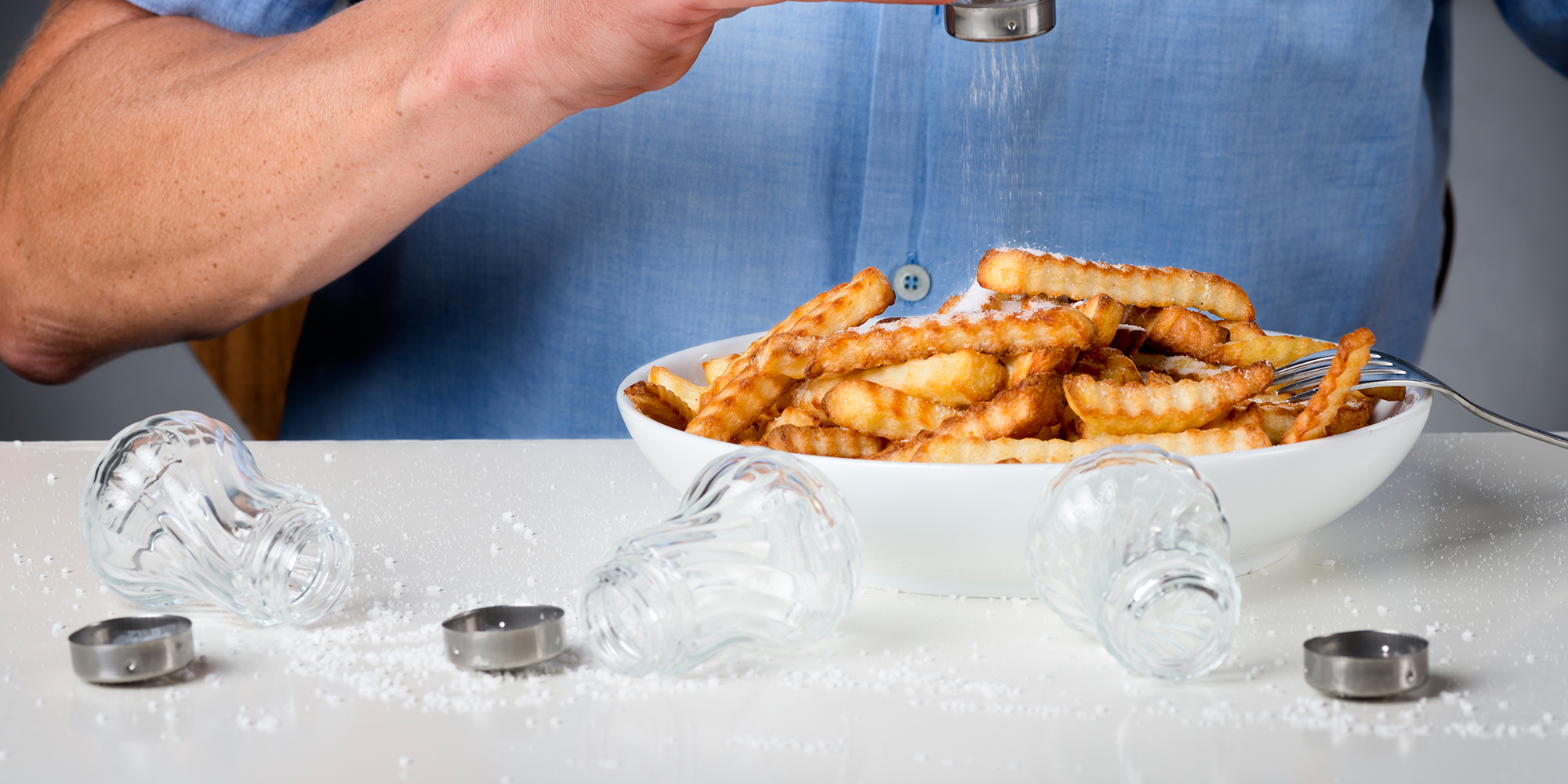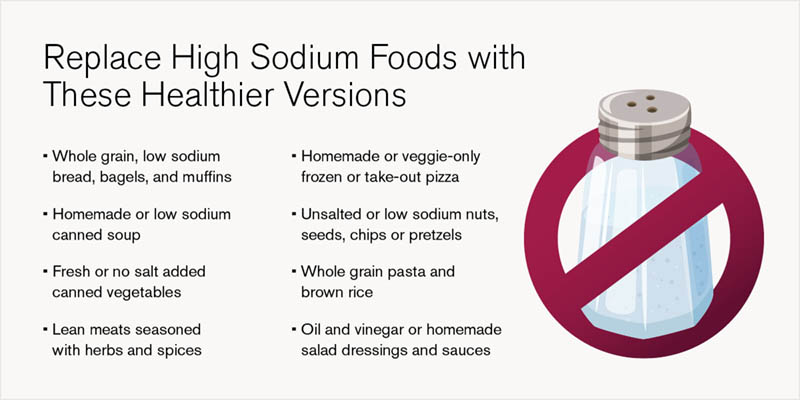How to Cut Salt and Reduce Your Health Risks
October 15, 2024
Categories: Heart & Vascular, Stroke, Health & Wellness
Think you’ll sprinkle just a little salt on your dinner? Better think twice.
Did you choose a fat-free treat? Watch that your “healthy” choice won’t push your daily sodium intake over the healthy limit.
While adding salt may seem like a simple way to enhance flavor, most foods already contain an ample supply. And while we all need sodium in our diet, consuming too much leads to health problems.
According to the 2020-2025 Dietary Guidelines for Americans, Americans should consume less than 2,300 milligrams (mg) of sodium per day yet the average is almost 3,400 mg per day. If you eat like most Americans, it is easy to exceed your recommended serving without adding salt to your food.
Too much sodium in your diet is linked to several health problems, including some that are life-threatening. It can cause or worsen fluid buildup (water retention), heart, liver and kidney disease, and high blood pressure – which increases your risk of heart attack and stroke.

Whether you want to reduce the amount of sodium you eat because of a health condition or simply because you want a healthy diet, you can cut out salt and other sodium easily by following these tips:
Tip #1: Put away the salt shaker
Don’t add salt, not even a pinch. That includes sea salt and kosher salt, which are no lower in sodium. One teaspoon of salt contains 2,300 mg of sodium.
Tip #2: Use sodium-free seasonings
Season your food with herbs and spices that do not contain sodium. Avoid any spice with the word “salt” such as seasoning salt, garlic salt and onion salt.
There are hundreds of herbs and spices that add great flavor and do not contain sodium.
Tip #3: Eat low sodium food you’ve prepared at home
Eating food you’ve prepared at home will help you control your sodium intake.
Limit fast food and eating at restaurants because foods they serve most likely will have more sodium (and fat).
Tip #4: Avoid high sodium canned and processed foods
Soups, canned vegetables, rice and pasta mixes, frozen dinners, instant cereal, instant pudding and gravy mixes are usually higher in sodium.
Tip #5: Use fresh ingredients to season your food
Use more fresh ingredients, and stop using seasoning mixes that contain sodium.
Tip #6: Leave the salt out while cooking or baking
Leave the salt out of recipes whenever possible. Try the recipe without the salt at least once.
Tip #7: Avoid fat-free snacks (they're loaded with salt or sugar)
Avoid buying fat-free snacks or condiments. The manufacturers most often replace the fat with additional salt or sugar. A reduced-fat or low-fat item is a better choice.
Tip #8: Read those labels for hidden sodium
Read the ingredients label on all foods you purchase to find the sodium level.
Finally, you need to know what you're looking for as sodium has many names and can come in many forms. These include:
- Sodium alginate
- Sodium sulfite
- Sodium caseinate
- Disodium phosphate
- Sodium benzoate
- Sodium hydroxide
- Monosodium glutamate (MSG)
- Sodium citrate
Tip #9: Watch out for the sodium in sports drinks
During bouts of physical activity, the body uses carbohydrates as its main fuel source. Sports drinks were first created to provide some of that fuel. However, many people now drink them even when they're not exercising or not working out hard enough to warrant the high sodium content. If you're a high-intensity athlete, stick with the sports drinks. Otherwise, water is more than enough to get you through your day and workout.
Mit Patel, MD, is a family medicine physician at Loyola Medicine. Dr. Patel focuses on individualized care for every patient depending on their physical, medical, and social needs. He earned his medical degree from the University of Illinois at Chicago College of Medicine and completed his residency in family medicine.
As an academic medical center, Loyola’s family medicine doctors take a multidisciplinary approach to treating all members of the family in several convenient locations across Chicagoland. If your condition requires more specialized treatment, our family medicine doctors can refer you to an appropriate specialist from our award-winning network.
Loyola’s board-certified doctors are trained in using the latest medical knowledge to treat patients with long-term health problems, provide regular health maintenance and recommend preventive health planning – including keeping you up-to-date on cancer screening guidelines.
Book an appointment today to see any of Loyola's specialists by self-scheduling an in-person or virtual appointment using myLoyola.
